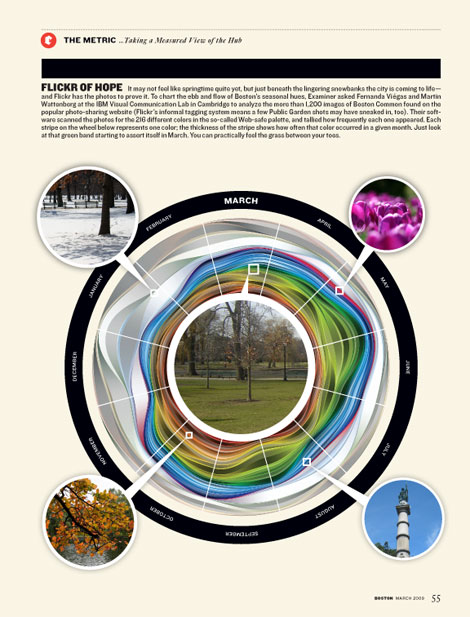Blase-LookingOutwards-2

I really liked Fernanda Viega and Martin Wattenberg’s (him again!) Flickr Flow visualization. They took photos from Flickr taken in different months of the year at the Boston Common, plotting the relative proportion of different colors. Aesthetically, I think it’s a beautiful piece because of the flow of the different colors and their undulation. However, the really interesting part of Flickr Flow for me is the questions it raises about why people are taking the different photos, and what the relative rate of photo taking is during each season. During the winter, it seems that people are essentially taking pictures of the Common covered in snow, although I might assume there are fewer people taking photos than during the summer. I wish there were a concentric circle around the outer ring giving data on how many photos were analyzed for each time period, or, even better, posted on Flickr with metadata saying they were taken during that time.

Eric Fischer’s Language Communities of Twitter is very interesting to me because it visualizes a dataset that keeps some of the most interesting features hidden. He makes a world map with different colored dots placed on the world indicating language usage on Twitter, taken from the streaming API. The resultant map reveals both population density and Twitter usage. Features such as the English language usage by lots of people on the U.S. East coast, the nebulous blob of Moscow and its Russian usage, and clear Western European national boundaries that are divided by ethnicity are very clear. However, I thought it would be interesting to look for enclaves of languages indicating the presence of ethnic minorities in different areas. Unfortunately, these pockets are not visible in Eastern Europe or in parts of the U.S. as I would have hoped. Part of this lack of linguistic interestingness could be explained by the lack of Twitter usage in Eastern Europe, although I think the main issue is the plotting algorithm biasing towards the dominant language in an area.